|
Jul
22
2024
|
|
Posted 1 years 169 days ago ago by Admin
|
|
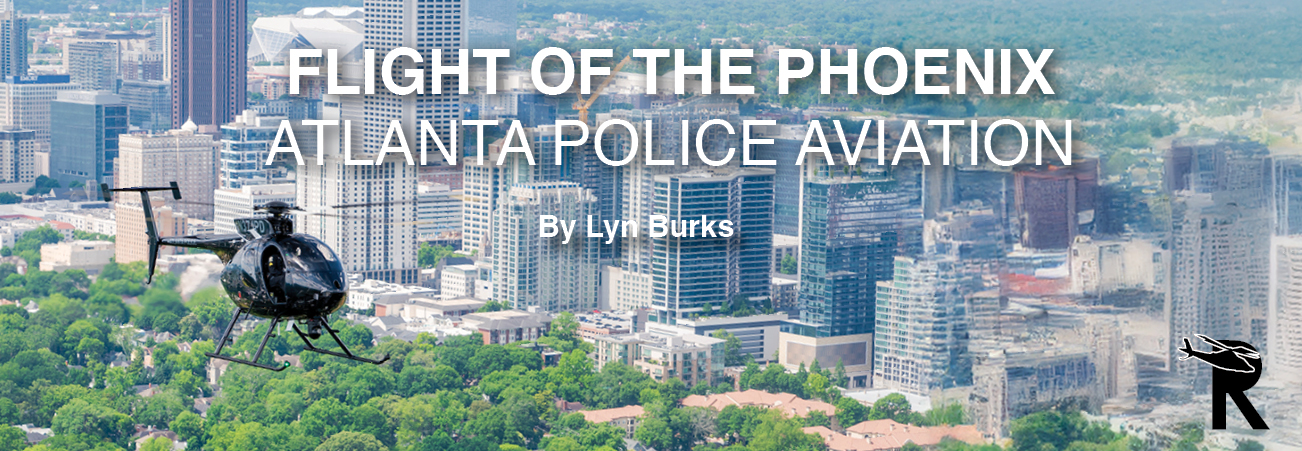
VIEW VIDEO
In 1836, the Western and Atlantic Railroad companies were trying to connect Chattanooga, Tennessee with Savannah, Georgia. They drove a milepost into the ground in what is now Foundry Street and named the settlement “Terminus.” According to the railroad’s chief engineer, Stephen H. Long, Terminus would be good "for one tavern, a blacksmith shop, a grocery store, and nothing else." A few years later following the building of a small grocery store, the settlement’s name changed to Thrasherville.
By 1842, the town had six buildings and 30 residents and was renamed Marthasville to honor Governor Wilson Lumpkin's daughter Martha. Later, John Edgar Thomson, chief engineer of the Georgia Railroad, suggested the town be renamed Atlanta, as a feminine version of the word "Atlantic,” referring to the Western and Atlantic Railroad. The residents approved, and the town was incorporated as Atlanta on 29 December 1847.
During the Civil War, the Union Army invaded Georgia from the north with a plan of capturing Atlanta in order to make it a strategic military hub. On the first of September 1864, Confederate General John Bell Hood decided to retreat from Atlanta, and he ordered its destruction by burning of all public buildings and possible assets that could be of use to the Union Army. On the next day, Mayor James Calhoun surrendered Atlanta to the Union Army, and on September 7, the city's civilian population was ordered to evacuate.
Since then, the Atlanta metropolitan area has become the hub of the Southeast U.S. for many industries, and boasts a population of more than 6 million people.
Keeping the Peace since 1844
The first semblance of keeping law and order in Atlanta was a town Marshal being selected in 1844. A mere 9 years later the town elected its first “night policeman” to keep watch over the town in the after hours. By 1858, the force had grown to 20 officers. Then in 1873, the year after Atlanta’s first officer was killed in the line of duty, the City’s 1st Board of Police Commissioners elected Chief Thomas Jones to lead the 26-man police force.
Diversity is not only a key virtue of today’s force, as the idea dates back to the origins of the department. In 1893, the very first documented woman hired by the Atlanta Police was a social worker named Miss Sue Holloway. She was hired as a Police Matron that worked to help young women and needy families.
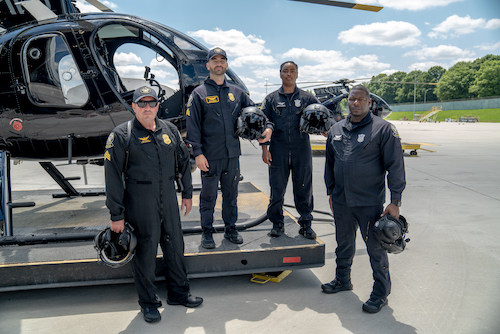
Helicopters Over Atlanta
In 1960, Atlanta’s local radio station, WSB, added a helicopter to its news fleet. Called the WSB Skycopter, the Hughes 300 with pilot and reporter, were put into service to provide traffic reports for Metropolitan Atlanta. Because Atlanta PD (APD) had several former military helicopter pilots in its ranks, many of its officers piloted the Skycopter on their days off, oftentimes doubling as on-air talent providing traffic reports for years.
Presumably, the experience of having officers over the city in the WSB Skycopter had an influence on the APD’s desire to start an aviation unit, because in April 1971 the city received federal funds to purchase its first aircraft. A couple of months later, APD put its first Hughes 300 along with two pilots into service and began patrolling the city. In 1973, APD had another first when Lieutenant Arthur Cardell became the first African-American pilot and commander of the APD Helicopter Unit.
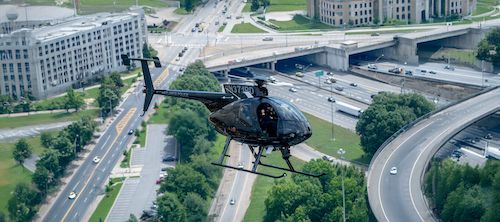
Growth and Modernization
As the unit matured, its fleet was transformed from the Hughes / Schweizer 300s to a fleet of larger turbine aircraft. For many years, the unit operated a mixed fleet that included an OH-6 (MD military variant), a Bell 206, and a Bell UH-1 Huey. One of the advantages of the mixed fleet was the diversity in the types of missions that could be performed. However, the downside is that it could complicate staffing needs and training requirements to ensure that pilots are well trained and current to fly different types of helicopters.
Today, the unit operates an ultra-modernized fleet of three MD530F helicopters to not only serve the residents of the City of Atlanta, but also in support of residents, visitors, and law enforcement agencies in surrounding counties. The core five counties of metropolitan Atlanta are Fulton, DeKalb, Cobb, Gwinnett, and Clayton counties. The move to standardize the fleet was intentional and provided the benefits of simplifying staffing requirements, and simplifying training while improving safety of operations.
Another bonus of the standardized fleet is that of maintenance. It’s much easier to swap out equipment to put an aircraft into service or to troubleshoot a maintenance issue when all the aircraft are similar. Maintenance is provided by Rotor Resources, a third party helicopter maintenance facility in Hiram, Georgia.
Another unique geographic feature of the area that can bring crime to the Atlanta Metro area is its proximity to the major interstates of I-75 and I-20. Also known as “the elbow,” this crossroads brings millions of transients from all directions into and through the city. Given such a large geographic area, the speed of the well equipped MD helicopters is critical to mission success. The unit is frequently called upon to collaborate and assist not only the surrounding local law enforcement agencies, but federal and state agencies as well such as Georgia State Patrol, DEA, ATF, and even the Presidential Secret Service.
Interestingly, APD does have an unmanned operations unit that uses unmanned aerial systems on certain types of calls to support ground officers. This creates a unique opportunity to collaborate with the APD helicopter unit. For example, over the last year there have been periods of civil unrest with protests erupting in parts of the city. Rather than having only helicopters performing surveillance and support ops over protest areas, the units were able to work together by layering the airspace and have the different platforms operational at different altitudes. The UAS aircraft were limited to the lower levels (200 - 400 agl) which allowed them to pinpoint and survey hotspots, while the helicopters were able to patrol and loiter at much higher altitudes and focus on the bigger picture. From a command and control standpoint, having these two aerial perspectives improve both safety and operational outcomes.
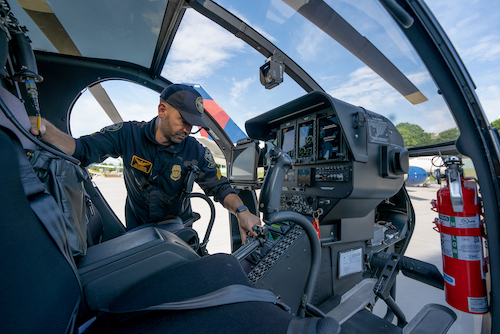
Aircraft / Crew Capabilities:
The WESCAM MX-10 EO/IR low-weight imaging system is ideal for low-altitude tactical surveillance and reconnaissance missions for manned and unmanned airborne platforms.
“The biggest game-changer for us was the addition of the Wescam MX-10. This tool has drastically increased our catch rate and improved situational awareness. We are confident in the aircraft and what we do. If you look at social media comments from some parts of the community, everybody knows that once we are overhead in pursuit of a criminal, you’re done and going to jail,” said Officer/TFO Markevis Holloway.
Training is Key
The unit is able to operate with three officer-pilots and two tactical flight officers (TFO). As with many law enforcement agencies, pilots traditionally come from the ranks of officers on the road. The path to the pilot-in-command (PIC) seat typically goes through the TFO position.
According to Sergeant Keeley Miller, the unit’s lead pilot and instructor, once an officer comes off the street and into the aviation unit, they’re trained to become the TFO. The TFO’s main job is to operate the communications equipment, on-board mapping system, hi-definition camera, and tactical searchlight to support and direct ground units during a call. Types of calls may vary, but can include search, surveillance, patrol, pursuit, and using the aircraft as an aerial command post.
Once a TFO is on board and gaining experience, and assuming they have a desire to become a PIC, they may begin their pilot training. The ultimate goal for the pilot in training is to complete the training and pass FAA exams for the ratings of private pilot helicopter and commercial pilot helicopter. The majority of all pilot training is completed with third party companies outside the agency. For all primary training towards private and commercial helicopter ratings, Tier One Helicopters in Atlanta are the provider.
One of the benefits of having an instructor inside the agency is that some flight training (approx. 10 to 15 hours) may be done in agency aircraft in order to supplement Tier One’s training. This capability saves the unit thousands of dollars in training cost. However, the majority of the primary training is done outside the agency. “Having an outside source provide our primary training is great, not only because it provides objective, quality training, but it also reduces risk for the agency,” said Sergeant Miller.
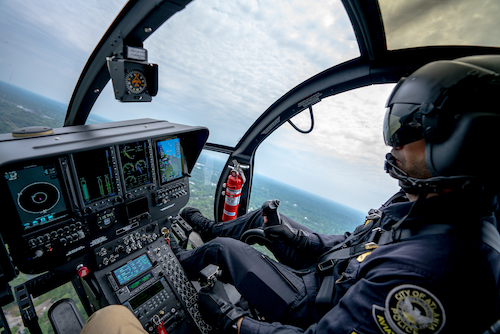
Notably, another “first” on the horizon for the unit is that of officer Charvonte Williams. She’s the newest TFO to the unit and has begun her pilot training. As she gains more experience and works towards completing her FAA pilot ratings, she may become the first female Africa -American female pilot in the unit’s history.
Once the TFO is rated as a commercial pilot, they then have the opportunity to fly the aircraft and build experience on flight segments when not performing TFO duties. Finally, once a pilot retires or transfers to another position in the department, the TFO will have an opportunity to be promoted to the position of PIC. Once the TFO is selected to become a PIC, they are sent to MD Helicopters in Mesa, Arizona, to receive their initial factory training course to learn aircraft systems and emergency procedures. Miller indicates that MD not only provides world-class training, but by doing some of the higher risk training maneuvers (e.g. autorotations) in MD aircraft, it eliminates the risk of damaging the unit’s helicopters.
Rise of the Phoenix
The APD helicopter unit uses the call sign of “Phoenix '' for its aircraft (Phoenix 1 and 3). In Greek mythology, the phoenix is an immortal bird that cyclically regenerates. Some legends say it dies in a show of flames and combustion and rises up in new life out of the ashes. As the city of Atlanta itself rose out of the Civil War’s ashes to become a Southern symbol of power and strength, so has the aviation unit risen to meet the challenges of today.
Markevis Holloway, a six-year veteran TFO of the unit, summed it up best when he indicated, “being the eyes in the sky over our city, it’s our job to use all the capabilities of our crew training and the aircraft to relay information in order to paint a picture and increase the situational awareness of our ground officers so that they may stay safe while serving the community and combating crime.” As long as the Phoenix flies, Atlanta's law enforcement officers, residents, and visitors should know that everyone is safer.
VIEW VIDEO
READ MORE ROTOR PRO: https://justhelicopters.com/Magazine
WATCH ROTOR PRO YOUTUBE CHANNEL: https://buff.ly/3Md0T3y
You can also find us on
Instagram - https://www.instagram.com/rotorpro1
Facebook - https://www.facebook.com/rotorpro1
Twitter - https://twitter.com/justhelicopters
LinkedIn - https://www.linkedin.com/company/rotorpro1